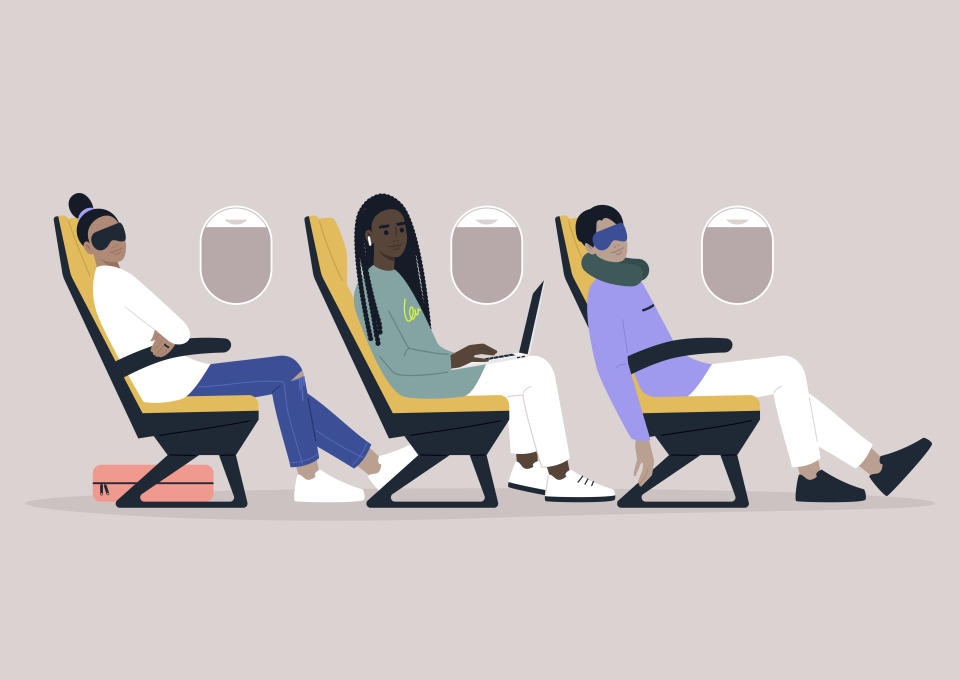Sleep Tourism Is the Travel-Slash-Wellness Trend That Will Help You Catch More Zzz's
You’ve heard of planning a trip around a certain museum you’ve been wanting to visit or cuisine you want to try, but did you know some people plan trips focused on getting a better night’s sleep? It’s called sleep tourism, and it’s part wellness trend, part travel trend and all something we’re very interested in.
The Swedish Trick to Sleeping Better Makes So Much Damn Sense
@trippin Going on holiday just to sleep - Thoughts? #sleep #sleeptourism #rest #naptime #travel #uktiktok #traveltrends #learnontiktok [e-266c] Black Dog - Arlo Parks
What Is Sleep Tourism?
Basically, sleep tourism refers to travel experiences that are specifically designed to improve your quality of sleep. Think: pillow menus to ensure you have the most comfortable night based on your favored sleep position, rooms specifically designed to block out all outside noise so you can focus on rest and recorded sleep meditations available to listen to as you doze off.
Why has this trend taken off in the past few years? Some experts say travelers are waking up (sorry) to the idea that traveling doesn’t have to come at the expense of sleep. Sleep researcher Dr. Rebecca Robbins told CNN Travel, “People often associate travel with decadent meals, extending their bed times, the attractions and the things you do while you're traveling, really almost at the cost of sleep. Now, I think there's just been a huge seismic shift in our collective awareness and prioritization on wellness and well-being.”
Where Can I Try It?

nadia_bormotova/getty images
4 Ways to Sleep Better No Matter Where You Are
As lovely as sleep tourism sounds, a vacation meant to revamp sleep habits isn’t in the cards for many of us. Here are four ways to improve your sleep quality without having to find your passport.
1. Spend Time Outside—Every Day
Whether it’s cold, hot or you’re just feeling kind of lazy, it can be tempting to skip your daily walk around the neighborhood. But exposing yourself to even a few minutes of natural blue light in the morning can be a game-changer, sleep-wise. “Expose yourself to sunlight first thing in the morning by going for a 15-minute walk, suggests behavioral sleep medicine specialist Lisa Medalie, PsyD, CBSM. “It improves circadian rhythm and morning alertness, thereby reducing insomnia.”
2. Leave Your Phone Outside of Your Bedroom
Just because keeping your phone in bed with you is common doesn’t make it healthy. The blue light from the screens on our beloved devices can trick the brain into thinking it’s still daytime, messing up our circadian rhythm, the physiological cycle that informs our sleep. Andrew Varga, M.D., a neurologist and sleep medicine specialist at Mount Sinai Hospital in New York explains, “Electronic devices with backlit screens emit a very high percentage of blue wavelength light. Exposure to blue light from any source—including TVs, cell phones, laptops, e-readers and tablets—late in the day has the effect of advancing our circadian phase, meaning it makes it so that one will become naturally tired later in the night.” The lesson here? Invest in an old-school alarm clock so you can leave your phone outside the bedroom.
3. Exercise in the Morning
For people who are having trouble falling asleep at night, Dr. Varga recommends working out in the morning as it can “promote wakefulness and possibly make it easier to fall asleep later on.” If that’s not doable, Dr. Varga says to make sure any exercise is completed at least three hours before the sleep onset time (i.e., the time you want to fall asleep) since exercise will energize you. And don’t worry; “working out in the morning” doesn’t have to mean a high intensity sweat sesh. Even a brisk walk to your favorite coffee shop will benefit your sleep routine.
4. Go to Sleep (and Wake Up) at the Same Time Every Day
Yes, it’s tempting to go to sleep late on Friday night and “make up” for it by sleeping in on Saturday, but varying your sleep times can be harmful to your restfulness. Try to work toward waking up and getting out of bed at the same time every day—regardless of when you have work—to get your sleep and wake times on track. “Much of it is about personal limit-setting, recognizing the environmental factors and personal habits that have the capacity to disrupt one’s sleep schedule,” Dr. Varga says, “and trying to minimize the variance in daily sleep onset and offset time, particularly between weekend and weekday times.”


